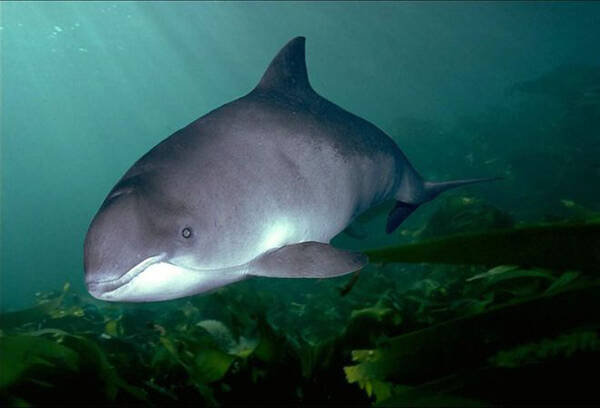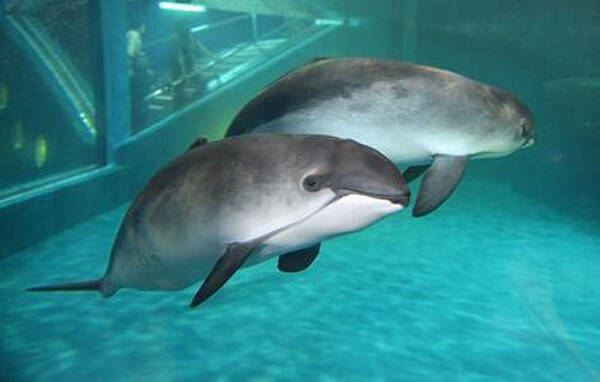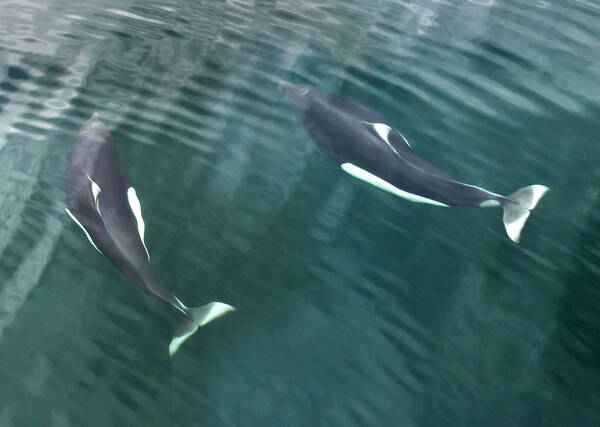porpoise
IUCN
LCBasic Information
Scientific classification
- name:porpoise
- Scientific Name:
- Outline:Cetacea
- Family:Porpoises G.Porpoises
Vital signs
- length:1.4-2m
- Weight:50-90kg
- lifetime:10-20years
Feature
It's a relatively small toothed whale
Distribution and Habitat
The porpoise prefers shallow water, and is active near the coast in spring and summer, and farther away in autumn. Its distribution area covers most of the Northern Hemisphere. It is found on the Pacific coast of the United States from Los Angeles to the mouth of the Macando River into the Beaufort Sea, on the Pacific coast of Asia from the Yellow Sea to the Chukchi Sea, in the North Atlantic along the East coast of the Americas from Cape Cod to the coast of Greenland, and sometimes even as far as Quanaa.
On the eastern Atlantic coast, porpoises are found from northern Africa (Senegal, Mauritania, Morocco) along the European coast to Spitzbergen. Through the Gulf of Kattegat and the Skagerrak Strait, they also enter the Baltic Sea. The exchange between the Baltic and the North Sea is very frequent. There are no resident porpoises in the Mediterranean, but there are often Atlantic porpoises that swim through the Strait of Gibraltar all the way to Mallorca. There are resident porpoise
Appearance
The body length of the porpoise can reach 1.85 meters, a few can reach more than two meters, it is a relatively small toothed whale. The length of the porpoises varies from region to region; for example, in the Baltic Sea, male porpoises reach only 1.40 meters, while female porpoises reach only 1.52 meters. Porpoises generally weigh between 50 and 60 kg, up to 90 kg.
As with most whales, sex differences in porpoises can be identified by the location of anal and genital slits. In male dolphins, the anus is clearly separated from the genital suture, which is located in front of the anus.
Compared to the heads of other toothed whales, the length of the porpoise's mouth is relatively short, and due to the fat layer of the mouth, this protrusion is completely invisible. The body is stout, the dorsal fin is triangular, the back is black, there is a gray area from the dorsal fin, and the belly is white. There is a dark path from the mouth to the base of the pectoral fin.
The dor
Details
The porpoise (Phocoena phocoena in Latin), also known as porpoise, is the most common toothed whale in the North and Baltic Seas.

Porpoises prefer calmer waters at a medium depth of about 20 meters near the coast, but occasionally swim deeper into the ocean.
Porpoises feed almost exclusively on fish, in addition to worms, mollusks, crustaceans and cuttlefish. The diet of porpoises varies from region to region. For example, flounder is a large part of the diet of the North Sea porpoises, and gobies are a large part of the diet of the Baltic Sea. In both the North Sea and the Baltic Sea, cod is a large component. Since porpoises cannot swallow larger fish, they typically eat fish smaller than 25 cm. Porpoises mainly scour the sea floor for food, and each needs about 4.5 kilograms of fish per day.
In addition to humans, natural predators of porpoises include sharks and killer whales. For example, porpoises have been found in the stomachs of Greenland sharks and great white sharks. But the porpoises' biggest predators are killer whales. In addition, other toothed whales are also very dangerous compared to smaller porpoises. Scientists have repeatedly observed bottlenose dolphins and short-beaked eusporpoises hitting their heads against the sides of porpoises, resulting in serious injuries.

The main parasites of the porpoise are sea lampreys, nematodes, flukes, tapeworms, and acantheads. Nematodes of the genus Ansisakis are introduced into porpoises by fish, and large clumps of nematodes are often found in porpoises' stomachs. Stenurus minor lives mainly in the bronchus, lungs and circulatory system. The insects that live in the ears can make porpoises deaf. The most common fluke that colonizes the digestive system and bile is Campula oblanga, which causes hepatitis and primary sclerosing cholangitis. External parasites such as whale lice are rare in porpoises.
Porpoises make many very different sounds. The exchange between them uses the sound of clicks, which are made up of high frequency (110 to 150 KHZ) and low frequency (about two KHZ) sounds. In addition, porpoises use sound for sonar localization, which has a low frequency (about 1.5 KHZ) and a high frequency (about 100 KHZ) component. By analyzing porpoises' calls, one can discern typical calls for positioning, threats, finding mates, help, and warning of danger. The frequency of porpoises' calls is outside the hearing frequency of killer whales. From an evolutionary biological point of view, this may be caused by competition between hunters and victims.
Females reach sexual maturity at about three to four years of age and males at two to three years of age. The estrus season varies from mid-July to late August in European waters. During this time, the size of the male's testicles increases dramatically. (The average porpoise's testicles weigh two grams, and can weigh more than 400 grams when in heat.) In most areas, porpoise mating takes place in deep water, with a few taking place in shallow water near the coast. Porpoises have a gestation period of 10 to 11 months, so calves are usually born in May and June. There is usually only one calf per litter, and twins are rare. Scholars still debate whether porpoises can give birth to one calf every year or every two years. Since whales do not have pelvic bones, birth is not difficult and can be carried out in the course of ordinary swimming. The peristalsis of birth lasts about one to two hours, the baby dolphin is born first, its head appears last, after the birth of the head, the umbilical cord is separated from the baby dolphin, after which the placenta is discharged, the baby dolphin automatically swims to the surface of the water to breathe after birth.

Young dolphins are 65 to 90 centimeters long at birth, weigh 5 to 7 kilograms, and suckle for eight to nine months, but they begin to eat fish after five months. When nursing, the mother swims sideways so that the young can breathe while Suckling. The milk of porpoises is high in fat (about 50%) and has a high protein and mineral content compared to the milk of other mammals. At the same time as they begin to eat fish, the young also begin to grow teeth, which are complete by seven months after birth. They separate from their mothers about a year after birth. Mothers with their young are generally closer to shore than other porpoises. Porpoises can live up to about 20 years, and most porpoises only live to be eight to ten years old.
The total number of remaining porpoises is unknown, although estimates are high, but some populations are already quite low, such as in the Black Sea and the Baltic Sea. The population ranges from 800 to 2,000 in the western Baltic and from 100 to 600 in the eastern and central Baltic. The International Union for Conservation of Nature classifies the porpoises as vulnerable. In all European countries, porpoises are listed as protected animals. Today, porpoises are listed in Appendix II of the Convention on International Trade in Endangered Species of Wild Fauna and Flora and it is illegal to import, transport and keep porpoises under European Union law.
The main threats facing porpoises are hunting, environmental pollution and bird flu.
The protection level is vulnerable (IUCN version 2.3), and it is included in China's national second-class protected animals.
Protect wild animals and eliminate wild meat.
Maintaining ecological balance is everyone's responsibility!








